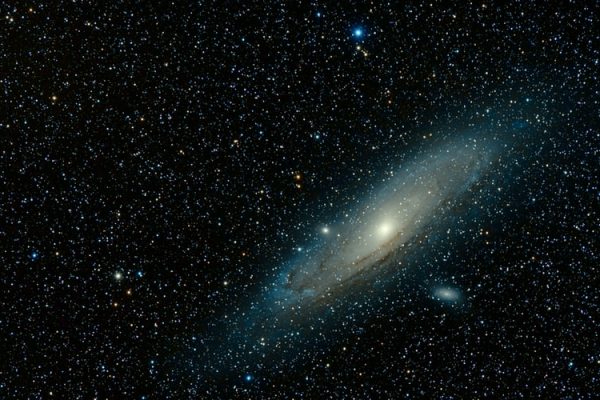Even if we take Hawking’s words at face value and we assume that there is empirical evidence for his claims and assume also that the problem of identifying negative energy is solved, one big issue still remains. Why?
Even if we take Hawking’s words at face value and we assume that there is empirical evidence for his claims and assume also that the problem of identifying negative energy is solved, one big issue still remains. Why?
Even if we take Hawking’s words at face value and we assume that there is empirical evidence for his claims and assume also that the problem of identifying negative energy is solved, one big issue still remains. Why?
When we enter college or the workplace, or any place in the modern world, we are oftentimes pummeled with various difficult questions to our beliefs. It can be tough sometimes to maintain our identity in the face of these attacks. Without satisfactory answers and replies to these objections, it’s not surprising that people are leaving religion in droves after failing to survive the constant militant scientific and atheistic onslaught.
A little while ago, I had the opportunity to attend a seminar here in Qum which addressed some recent issues raised in theoretical and quantum physics. On the surface, some of the ideas presented by these personalities, such as Dr. Lawrence Krauss and Dr. Stephen Hawking, appear to neutralize and nullify the beliefs central to religion. They claim a universe can be created from nothing. If true, then our claim that the universe, and everything in it, needs an all-powerful creator becomes null and void and religion goes down the drain.
This issue is one of many that falls under the greater subject of the relationship between science and religion. If Allah provides the tawfīq, then I will try to address that topic in a separate series.
At the very least, I thought it might be beneficial to share some notes from this session. I believe this will be helpful to all of us, whether you’ve formally studied any branch of physics, or whether you’re simply an enthusiast in these discussions and read them on the side as a hobby (like me).
1st Presenter: Ali Reza Jalālīfar
Hawking asserts that, according to physics models and projections, we can observe how the universe was created from nothing and came into existence by itself. To begin, in order to understand the universe as understood in physics, three concepts need to be properly understood & explained:
- The plane in which this universe occurs and takes place which we call space-time
- The original/prime matter which executes physical actions
- The laws which govern and rule over physical matter in this plane
Space-Time
In classical physics, space-time is an absolute concept which was separated and unrelated, but in modern physics, it has been made connected and relative. According to Einstein’s theory of special relativity, there is 1 single 4-dimensional space-time and in general relativity, diffraction and torsion are also added to this 4d space-time. Based on general relativity, each body and mass in space-time creates its own curvature within its own boundaries. This diffraction can affect other bodies. Thus, according to general relativity, gravity is identified through 1 specific body’s effect on space-time and space-time’s effect on another specific body.
At the beginning of the 20th century, astronomers showed that galaxies are moving away from us and the idea was then presented that this whole universe had probably originated from an initial singularity, which became known as the big bang theory. This means that all bodies were concentrated into 1 single point and this universe had started expanding due to the effects of the ‘bang’. Hawking’s initial thoughts were that we will eventually reach a place where the laws of physics won’t apply (10-43 seconds before the creation of the universe). Therefore, physics, as it stands currently, doesn’t allow us to go farther back than this. From this, anything referred to as the beginning of time in physics is completely meaningless.
Prime Matter
In classical physics, prime matter was referred to as a body which was the essential trait of matter. Later, in special relativity, both mass and energy of a body were presented such that under certain conditions, matter appears with the features of a body and under certain other conditions, it appears as energy. Quantum mechanics attempted to explain the rules governing this matter and presented formulas based on the various possibilities. The claim of quantum mechanics is that if you want to identify the position and velocity of a particle at the same instant, the product of these 2 calculations will definitely contain inaccuracies, also known as Heisenberg’s uncertainty principle (ΔpΔx≥ħ). In other words, any two variables that do not commute cannot be measured simultaneously—the more precisely one is known, the less precisely the other can be known. Heisenberg wrote:
One can never know with perfect accuracy both of those two important factors which determine the movement of one of the smallest particles—its position and its velocity. It is impossible to determine accurately both the position and the direction and speed of a particle at the same instant.
Hawking explains that this uncertainty principle allows for the appearance of tiny amounts of energy in an empty space where there is no prime matter or energy, in very short time intervals. These appearances are known as quantum fluctuations or quantum vacuum fluctuations. Hawking, and before him Edward P. Tryon, presented this idea that perhaps all of this prime matter which is necessary for the universe came to be through quantum fluctuations. As a result, in the notion of creation from nothing, there exist space, time, and quantum fluctuations. After these quantum fluctuations, matter and anti-matter were created in short time intervals and this matter has found the possibility of continuation within specific conditions.
Laws Governing the Universe
In order to understand physical phenomena, in addition to space-time and matter, governing laws are also needed. What is established thus far is that at the present time, certain fundamental laws exist, e.g.: laws related to electromagnetism, gravity, strong and weak nuclear forces. However, how these fundamental laws came to be is a separate discussion. Some believe the laws of physics were born during the process of the creation of the universe. In order to explain the notion of creation from nothing, there are necessary laws which are more fundamental, aka more prior, to the current physical laws of the universe. In other words, the issue is that when elaborating upon creation from nothing, laws have not been removed; but rather, there are a set of laws which are based upon another set of more foundational laws. New laws are born from these more fundamental laws and the current universe acts in accordance to these. Thus, in order to understand the physical universe, we are in need of space-time, prime matter, and certain fundamental laws.
However, the nothingness which Hawking speaks about in regards to creation from nothing is space and time, or a plane, which also exists within quantum laws. Therefore, in reality, that which he refers to as nothing is merely a universe devoid of physical prime matter. Accordingly, Hawking’s statement should be corrected. He shouldn’t say ‘the universe was created from nothing’; instead, he should state ‘physical prime matter, according to theoretical physics, can only come into existence on the basis of space-time and quantum laws’.
2nd Presenter: Dr. Maysam Tavakkolī-bīnā
In 1973, Edward P. Tryon described a model in which, according to quantum physics, the possibility of the emergence and appearance of matter exists, even naturally, in a quantum vacuum. The first moment of the universe was not 14 billion years ago. These emergences are possible at any and every single moment. He claimed that it’s possible that during these quantum jumps, in which things come in and out of existence, under certain conditions, these things remain stable and continue to exist. Otherwise, they almost instantly jump back into non-existence.
Hawking expanded upon this and believed that this idea can be employed in order to present a theory regarding the creation of the universe. According to him, it is possible that in the horizon of a black hole, in 1 of these quantum fluctuations, of the particles and antiparticles which are produced, 1 falls inside of the black hole and 1 falls outside. Through the production of the resulting negative energy, this particle which has come out of the black hole becomes stable. Thus, the possibility exists that matter comes into existence from nothing, without need for some metaphysical cause or phenomenon.
Here, a few points should be expounded upon:
- Hawking’s theory is simply a theory or perhaps just a hypothesis. Moreover, it is just a plan or design and in reality, it suffers from a lack of empirical proof. Consequently, it is not accepted in the physics community and has thus been refuted.
- The concept of negative energy which he considers real and true has also not been recognized nor accepted.
The concepts of nothingness and this so-called empty vacuum which are offered differ from the concepts of nothing and nothingness in philosophy. A vacuum in quantum physics has 2 characteristics: it definitely exists within space-time and likewise, quantum laws are present and established. The only thing absent in this vacuum is matter.
- Space-time is a model. Yet Hawking asserts that while in the domain of physics we are placed in a world of models and projections, we should abandon this state of modeling and consider space-time as a true and concrete reality. This is something that exceeds and violates the boundaries of physics and has led to many objections.
- The concepts of accident and accidental in quantum physics are defined differently than what the general layperson understands from these terms. They don’t mean ungoverned, unregulated, and uncalculated; rather, they mean a more complex multi-state system is situated between phenomena.
Physicists are quiet in regards to what the reality of these accidents are and in regards to why they occur, they don’t give an opinion. Therefore, we don’t know what is happening for these particles to behave in the way they do, and the only thing we do know is that they behave in this way. Nonetheless, they are not acting without being governed by laws and forces and act in accordance with a more complex system.
Furthermore, it’s possible that we’ll never understand why these accidents occur and it’s also possible that there are forces at play that we are calling accidental simply because we haven’t discovered them yet. Thus, physics can reconcile and work with all of these possibilities and remain quiet in regards to them.
Even if we take Hawking’s words at face value and we assume that there is empirical evidence for his claims and assume also that the problem of identifying negative energy is solved, one big issue still remains. WHY?
Why did these events take place? Why must these laws exist? These quantum laws are just that: simply laws. They are non-essential phenomena with no requirement or necessity to exist. So why do these specific laws have to exist? Likewise, why can a particle emerge in a quantum vacuum?
These questions will never be answered. Physics deals with the how of phenomena not the why. Physicists are unable to answer why questions. Fundamentally, laws don’t cause anything to take place. Laws don’t cause phenomena to occur. Laws don’t result in the emergence of anything. They don’t do anything. They are solely meant for explanatory purposes. For example, in order for there to be laws governing energy fluctuations, these must exist something called energy prior to it. The laws can only be understood by taking energy as a presumption. These quantum laws cannot simply by themselves solve the problem of the reason for an event or phenomenon. What exists prior to these laws must be understood in order to get a complete picture.
Final Presenter: Hujjat ul-Islam wa al-Muslimeen Dr. Ali Abbas
Ancient theologians and philosophers have long since discussed the issue of the creation of the universe. Our holy texts have also referred to the universe’s creation and upon first glance, seem to indicate that the world is created (ḥādith) and that it has a beginning point to its existence. The theologians explained the universe being a created phenomenon due to its origination and creation in time (ḥudūth zamānī). This view has been critiqued. What is time? Can time exist without the universe? The theologians have answered that the concept of time that we’re discussing is an illusion (not to be understood in the same sense as illusionary time in physics). Time is not alongside matter, but the extension of time flows and progresses, and we picture that with our imagination. This concept of illusory time has also been criticized.
The philosophers have not explained the creation of the universe through origination in time and instead maintain that both time and space are characteristics and qualities of matter. In this way, divine emanation (fayḍ ilāhī) is eternal and there is no hindering or preventing it. It is not the case that there was a time in which there was no divine emanation.
The Philosophers Solution for the Creation of the Universe: Essential Creation (ḥudūth dhātī)
Material existents are not necessary existents. They are in constant need of an originating cause, something to get it started, and a substantiating cause, something to keep it going. Possible and contingent existents are perpetually in need of a cause. This material world is always in need of a cause and must be given existence from something outside of itself. At this moment and in every single moment, it is being created and recreated over and over again. This exposition is further clarified with Mulla Sadra’s (q) theory of trans-substantial motion (ḥarakah jawharīyyah). It shows that all existents are in a state of being created:
“Is there any doubt about Allah, the originator of the heavens and the earth?”
[14:10]
Even if we solve the issue of the initial singularity of the universe and say that the universe was independent and self-sufficient, and that positive and negative energy return back to each other and collapse into nothingness (or even collapse to create a new universe), the issue of possible, contingent existents and that new universe being in need cannot be explained or solved.
According to Mīr Dāmād (q)
The level and order of this universe is grounded to another world that is a container in which existents subsist without changing. That world is a temporal world (‘ālam dahr) and this material world (‘ālam māddah) emerges from that temporal world. This world is not changeable in the temporal world, but rather it is originated and created (ḥādith) in relation to it. Those temporal existents are also originated and created in relation to the eternal and everlasting world (‘ālam sarmad). The eternal world, which is The Divine Essence, sits atop this temporal world. Of course, we should note here that temporal creation & origination (ḥudūth dahrī) is not the same as the creation in time (ḥudūth zamānī) of the material world. So, between the outward meaning of religious texts and scientific evidence and the view of the philosophers, there seems to be an apparent conflict.
Allamah Tabatabai’s (q) Explanation
Time and space are qualities of material. Time is inseparable from material. Some of Hawking’s statements can be justified, such as the fact that the beginning itself has no beginning. The creation of this world doesn’t need time. No doubt, it is created and has a starting point; however, it doesn’t require time nor does it need time itself to begin. This is because time has started with the creation of this world. One of Hawking’s colleagues, Professor Don Page, says that if we consider this universe to be a closed universe, it would still be in need of a creator. Closing off this environment doesn’t remove its need for a creator.
Based on Allamah’s (q) views, we can say that even though this universe doesn’t have a beginning of time itself, it still requires a creator. Even if we accept Hawking’s claims that the laws of physics necessitate that the singularity point, and whatever was prior to it, had no time, the starting point would still need a creator and it would still be originated. Its creation and birth was not by way of itself. This universe is a limited and restricted existent and it cannot create itself. This universe has a beginning, it is limited, it is closed off, and these very limitations and constraints lead to it needing to be created and originated.
The fundamental issue in theoretical physics is that they identify and explain phenomena based on mathematical models and conceptions. These are not real, concrete, observable matters. Thus, we have no actual tangible observations of negative energy. Similarly, time and numbers are imaginary, illusory. They have no real, objective meaning; but instead, are just suppositions and ideas.
If we explain the universe based off of these models, in reality, it’s resting on a mere hypothesis and assumption.
Hawking says that the universe can come from nothing by way of these laws. Eventually, it must also return to nothingness (or collapse into another new universe). However, this claim is nothing but a model, not a substantiated proof. It is an explanation, not a justification. It does not and cannot explain the question of why? Thus, we must strive towards an analysis which is real, concrete, and objective. We will undoubtedly come to the conclusion that the only way we can study, analyze, and explain the reality of this universe, is through intellectual and philosophical analysis.
This article was written by Saiyid Hasan Ali Rizvi for Iqra Online. To read the original article, click here.





